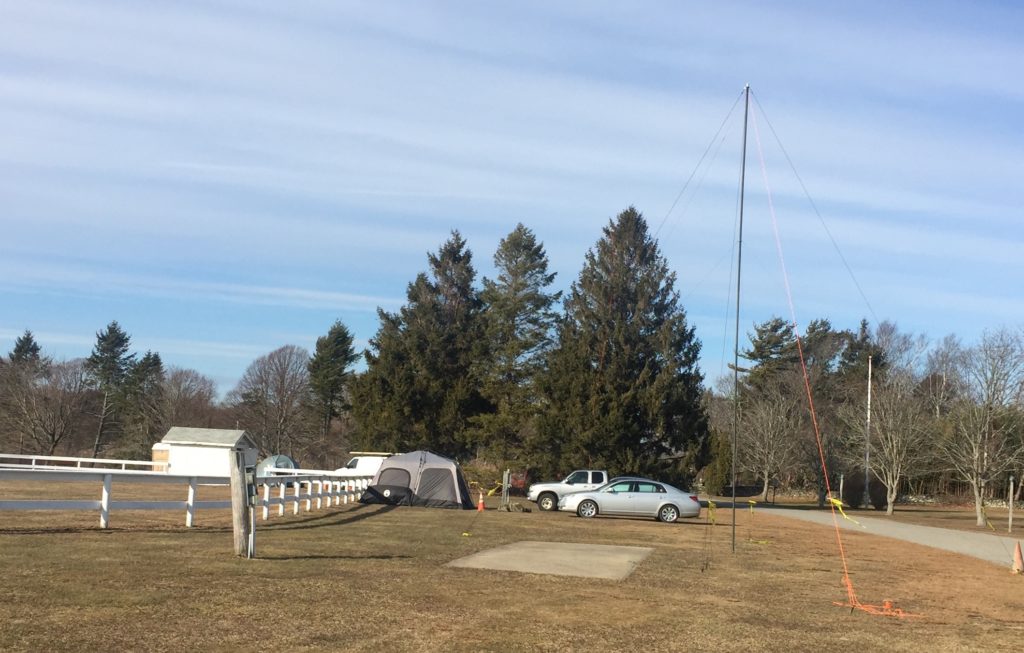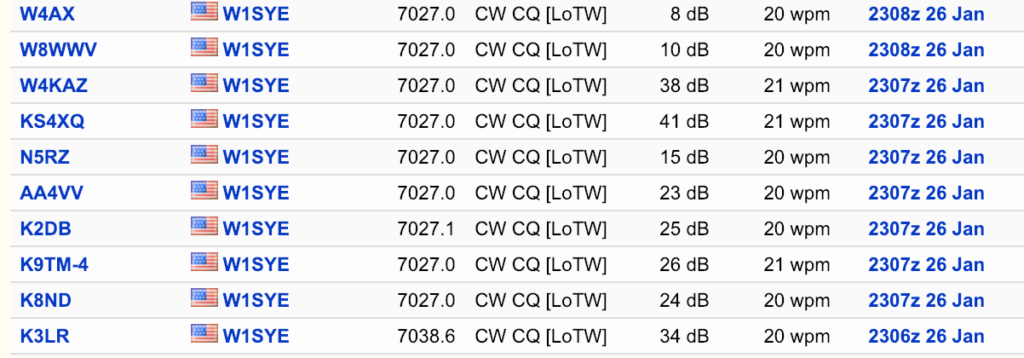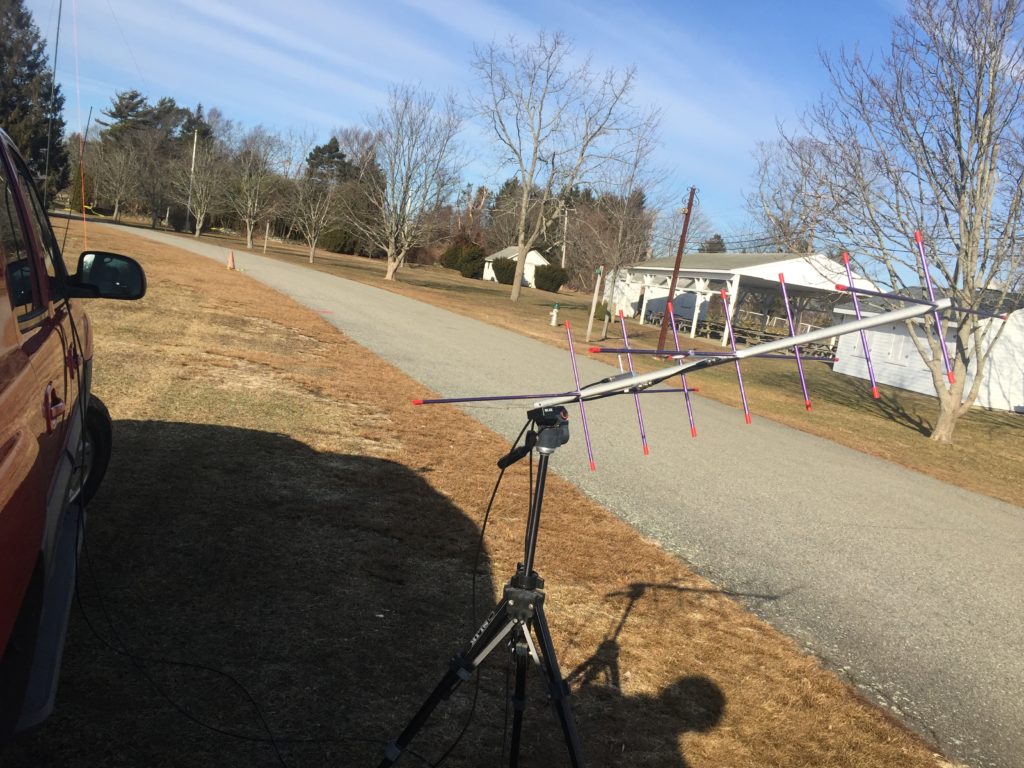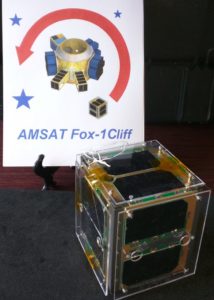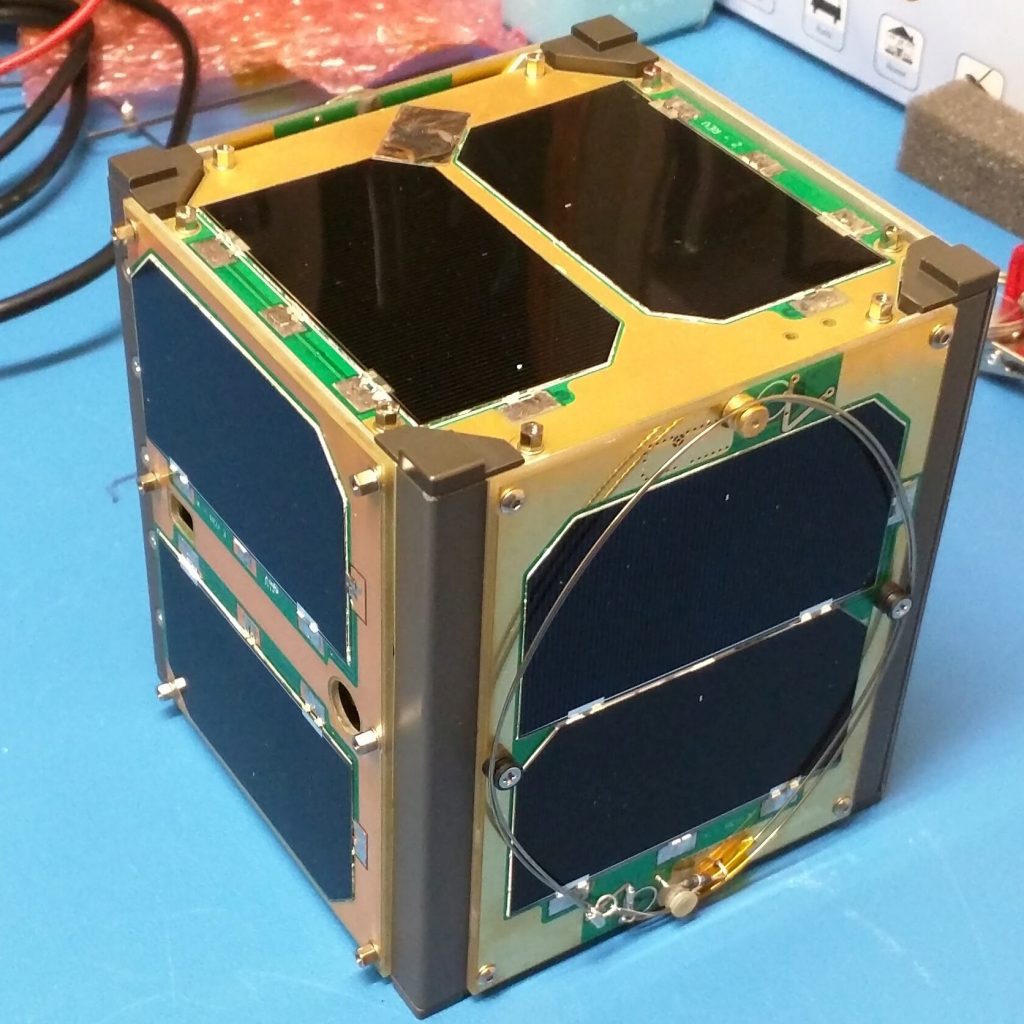Right on schedule at 14:00 EST, W1SYE was on the air for Winter Field Day from Glen Park in Portsmouth. Willy W1LY and helpers made short work of the setup, and had two ladder line antennas in the trees, and two tents setup for operation by noon. There was some concern about HF noise from a new generator, and the noise went away when it was swapped out. And as you might expect there was a scramble to get the logging computers up and going.
Things were working well later this afternoon. Reverse Beacon Network spots indicated that the CW tent was putting out a fine signal
Bob WB4SON made a satellite (only one allowed) with N1FD who was 4O NH (4 transmitters Outdoors in New Hampshire). The first satellite pass happened 13 minutes after the contest began, and the contact was in the log as soon as the satellite was above the horizon.

